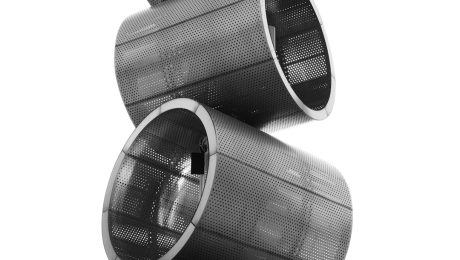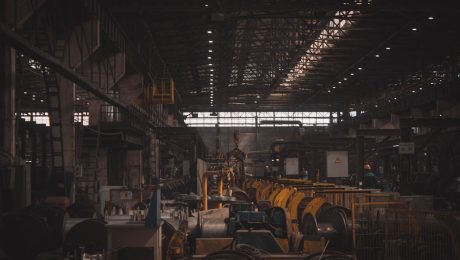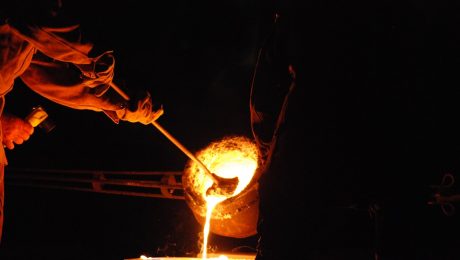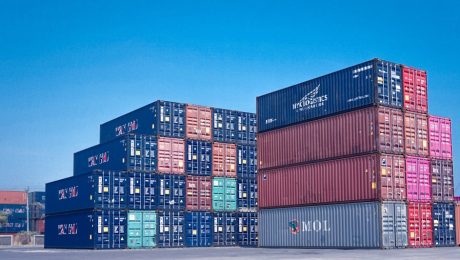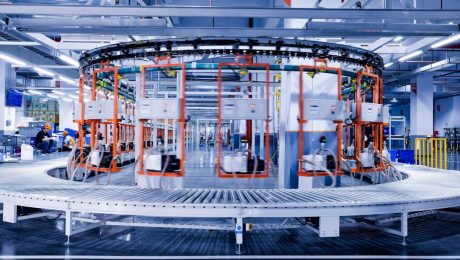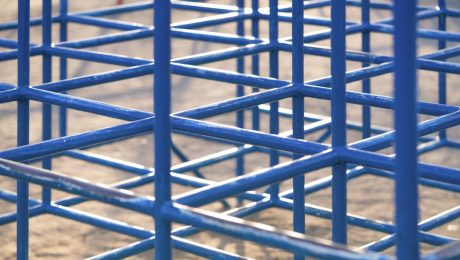In today’s rapidly evolving business landscape, stagnation is a death sentence. Organizations that thrive are those that embrace a culture of continuous improvement – a mindset that prioritizes ongoing learning, adaptation, and optimization. This isn’t just about tweaking processes; it’s about embedding a philosophy of constant betterment into the very fabric of the organization. This post delves into the core principles and practical strategies for fostering a thriving culture of continuous improvement, ultimately leading to increased efficiency, innovation, and employee engagement.
1. Understanding the Foundation: What is Continuous Improvement?
Continuous improvement, often associated with the Japanese philosophy of Kaizen, is more than just a buzzword; it’s a holistic approach to organizational development. It’s about making small, incremental changes over time, rather than relying on large-scale, disruptive overhauls. This iterative process fosters a culture of learning from mistakes, identifying areas for improvement, and implementing solutions. The key lies in the consistent pursuit of perfection, recognizing that there is always room for enhancement. It’s about empowering every member of the organization to identify and address inefficiencies, fostering a sense of ownership and accountability. This differs from traditional approaches which might involve periodic, large-scale reviews, often leading to disruption and resistance.
2. Cultivating a Growth Mindset: Empowering Employees for Improvement
A successful culture of continuous improvement hinges on a growth mindset. This means fostering an environment where employees are encouraged to embrace challenges, view failures as learning opportunities, and persistently seek self-improvement. This requires leadership to actively promote psychological safety, where individuals feel comfortable voicing concerns, suggesting improvements, and taking calculated risks without fear of retribution. Training programs focused on problem-solving, critical thinking, and data analysis can significantly contribute to this. Regular feedback sessions, both formal and informal, are crucial for recognizing achievements and identifying areas for growth. Furthermore, providing opportunities for professional development and skill enhancement demonstrates a commitment to employee growth, reinforcing the value of continuous learning.
3. Implementing Practical Strategies: Tools and Techniques for Improvement
Several practical tools and techniques can facilitate continuous improvement. Lean methodologies, such as 5S (Sort, Set in Order, Shine, Standardize, Sustain) and Kanban, streamline workflows and eliminate waste. Six Sigma focuses on reducing process variation and improving quality. Root cause analysis helps identify the underlying reasons for problems, enabling the implementation of targeted solutions. Data-driven decision-making, facilitated by the use of key performance indicators (KPIs) and data visualization tools, provides objective insights into areas needing improvement. Regular process mapping exercises can reveal bottlenecks and inefficiencies, paving the way for streamlined processes. The choice of tools and techniques should be tailored to the specific needs and context of the organization.
4. Measuring Progress and Celebrating Successes: Tracking and Recognition
Tracking progress is essential to ensure that continuous improvement efforts are yielding tangible results. This involves establishing clear metrics and regularly monitoring them. Regularly reviewing KPIs, analyzing data, and celebrating milestones are crucial for maintaining momentum. Public acknowledgment of achievements, both individual and team-based, reinforces positive behavior and motivates further improvement. Sharing success stories across the organization inspires others to contribute their ideas and actively participate in the continuous improvement process. Creating a culture of recognition and appreciation is vital for sustaining employee engagement and fostering a sense of collective accomplishment.
5. Leadership’s Crucial Role: Leading by Example and Fostering a Culture of Improvement
Leadership plays a pivotal role in establishing and sustaining a culture of continuous improvement. Leaders must lead by example, actively participating in improvement initiatives and demonstrating a commitment to ongoing learning. They need to create a vision for continuous improvement and communicate it effectively throughout the organization. This involves setting clear expectations, providing the necessary resources, and empowering employees to take ownership of the process. Leaders should also foster a culture of open communication, where feedback is actively solicited and acted upon. Regular training and coaching sessions for managers on continuous improvement methodologies are crucial for ensuring that they can effectively guide and support their teams in their improvement efforts. Ultimately, leadership’s commitment and active participation are essential for creating a sustainable culture of continuous improvement.
By embracing the principles outlined above, organizations can transform their operational efficiency, boost employee morale, and drive sustainable growth. Continuous improvement isn’t just a program; it’s a journey, a commitment to ongoing learning and adaptation that ultimately leads to a more resilient and successful organization.
Tags: Continuous Improvement, Kaizen, Lean Management, Process Improvement, Organizational Culture
body {
font-family: sans-serif;
line-height: 1.6;
}
h1, h2, h3 {
color: #333;
}
h1 {
font-size: 2.5em;
}
h2 {
font-size: 2em;
}
h3 {
font-size: 1.5em;
}
Electric Resistance Welded (ERW) pipes are a cornerstone of modern construction and industrial applications. Their robust construction, cost-effectiveness, and versatility make them a preferred choice for a wide range of projects. This comprehensive guide delves into the intricacies of ERW pipes, exploring their manufacturing process, diverse applications, advantages, limitations, and future prospects.
The Manufacturing Process of ERW Pipes: From Coil to Completed Pipe
ERW pipe manufacturing is a sophisticated process that involves several key steps. It begins with a steel coil, which is uncoiled and passed through a series of rollers to form a cylindrical shape. This continuous tube is then passed through a high-frequency electric current, which heats the edges to a welding temperature. The edges are then pressed together, forming a weld seam. This weld is further refined through various processes, including sizing and straightening, to ensure dimensional accuracy and structural integrity. Finally, the pipe undergoes rigorous quality control checks to meet specific industry standards and customer specifications. Different processes and techniques are used to create various pipe diameters and wall thicknesses, catering to a wide array of needs.
The precise control over the welding process in ERW pipe manufacturing allows for consistent quality and high production rates. This efficiency contributes to the overall cost-effectiveness of ERW pipes compared to other steel pipe manufacturing methods.
Diverse Applications of ERW Pipes: Across Industries and Sectors
The versatility of ERW pipes makes them suitable for a wide range of applications across various industries. Their strength and durability make them ideal for:
- Construction: ERW pipes are extensively used in structural applications, scaffolding, piling, and water and gas distribution networks. Their ability to withstand high pressures and stresses makes them a reliable choice for underground piping systems.
- Oil and Gas Industry: ERW pipes play a crucial role in transporting oil and gas across long distances, often under demanding conditions. Their resistance to corrosion and high pressures makes them a preferred choice for pipelines.
- Automotive Industry: ERW pipes are used in the manufacturing of automotive components, including exhaust systems, frames, and chassis parts. Their precise dimensions and consistent quality contribute to the overall performance and reliability of vehicles.
- Agricultural Sector: ERW pipes are commonly used for irrigation systems, providing efficient and reliable water delivery to crops. Their resistance to corrosion and their ability to withstand harsh environmental conditions make them a practical solution.
- Manufacturing and Industrial Processes: In industrial settings, ERW pipes are used in various applications, including conveying fluids, gases, and solids. Their ability to withstand high temperatures and pressures makes them suitable for demanding industrial processes.
Advantages of ERW Pipes: Why They’re a Popular Choice
The popularity of ERW pipes stems from several key advantages:
- Cost-effectiveness: The efficient manufacturing process of ERW pipes makes them a relatively inexpensive option compared to other types of steel pipes.
- High Strength and Durability: ERW pipes are known for their robust construction and ability to withstand high pressures and stresses.
- Dimensional Accuracy: The manufacturing process ensures high dimensional accuracy, which is crucial for many applications.
- Versatility: ERW pipes are available in a wide range of sizes, wall thicknesses, and materials, making them suitable for diverse applications.
- Easy to Weld and Fabricate: The uniform structure of ERW pipes makes them easy to weld and fabricate, reducing installation time and costs.
Limitations of ERW Pipes: Understanding Potential Drawbacks
While ERW pipes offer numerous advantages, it’s important to acknowledge their limitations:
- Weld Seam Quality: The quality of the weld seam is crucial for the overall strength and integrity of the pipe. Improper welding techniques can lead to weaknesses in the pipe.
- Surface Finish: The surface finish of ERW pipes may not be as smooth as seamless pipes, which can be a concern in certain applications.
- Susceptibility to Corrosion: Like other steel pipes, ERW pipes are susceptible to corrosion, particularly in harsh environments. Protective coatings or specialized materials may be necessary to extend their lifespan.
- Limited Size Range for Certain Applications: While ERW pipes are available in a wide range, they may not be suitable for all applications, particularly those requiring extremely large diameters or specific wall thicknesses.
Future Trends in ERW Pipe Technology: Innovation and Sustainability
The ERW pipe industry is constantly evolving, driven by the demand for improved performance, sustainability, and cost efficiency. Future trends include:
- Advanced Welding Techniques: Ongoing research and development focus on enhancing welding techniques to improve the quality and consistency of the weld seam.
- Improved Corrosion Resistance: The development of new coatings and materials aims to enhance the corrosion resistance of ERW pipes, extending their lifespan and reducing maintenance costs.
- Sustainable Manufacturing Processes: Efforts are being made to reduce the environmental impact of ERW pipe manufacturing through the use of recycled materials and energy-efficient processes.
- Smart Pipes: Integration of sensors and smart technologies into ERW pipes for real-time monitoring and predictive maintenance is an emerging trend.
In conclusion, ERW pipes remain a vital component in numerous industries, offering a balance of strength, durability, cost-effectiveness, and versatility. Understanding their manufacturing process, applications, advantages, and limitations is crucial for making informed decisions in various engineering and construction projects. The ongoing advancements in ERW pipe technology promise even greater efficiency, sustainability, and performance in the years to come.
Tags: ERW pipe, electric resistance welded pipe, steel pipe, pipe applications, steel pipe applications
The integrity of pipe products is paramount across various industries, from oil and gas to water distribution and construction. A single point of failure in a pipeline can have catastrophic consequences, highlighting the critical role of robust quality control systems. This post delves into the multifaceted world of pipe product quality control, exploring the various stages and methods employed to ensure consistent, high-quality products.
1. Raw Material Inspection: The Foundation of Quality
The journey to a high-quality pipe begins long before the manufacturing process. Rigorous inspection of raw materials, including steel coils or billets, is the cornerstone of effective quality control. This involves several crucial steps:
- Chemical Composition Analysis: Spectrometric analysis verifies the precise chemical composition of the steel, ensuring it meets the specified grades and standards (e.g., ASTM A53, API 5L). Deviations from these standards can significantly impact the pipe’s strength, corrosion resistance, and overall performance.
- Mechanical Property Testing: Tensile testing, yield strength determination, and elongation tests assess the steel’s ability to withstand stress and strain. These tests ensure the raw material possesses the necessary mechanical properties for the intended application.
- Dimensional Verification: Precise measurements of the raw material’s dimensions (thickness, width, etc.) are crucial for efficient manufacturing and to prevent defects arising from inconsistencies in the starting material.
- Visual Inspection: A thorough visual inspection helps identify surface defects like cracks, laminations, or other imperfections that could compromise the final product’s integrity.
2. In-Process Quality Control: Monitoring Manufacturing Processes
Maintaining quality control isn’t just about inspecting the raw materials; it requires constant monitoring throughout the manufacturing process. This involves:
- Dimensional Checks During Forming: Regular checks during pipe forming (e.g., rolling, forging, welding) ensure the pipe maintains the specified dimensions, wall thickness, and ovality. Deviations are immediately addressed to prevent the creation of defective pipes.
- Weld Inspection: For welded pipes, stringent quality control measures are vital. This includes visual inspection of welds, radiographic testing (RT), ultrasonic testing (UT), and other non-destructive testing (NDT) methods to detect internal flaws like porosity or lack of fusion.
- Heat Treatment Monitoring: Heat treatment is crucial for achieving the desired mechanical properties in the pipe. Precise temperature control and monitoring during this process are essential to ensure the pipe’s strength and durability.
- Real-time Data Acquisition: Modern manufacturing facilities utilize sophisticated sensors and data acquisition systems to monitor various parameters throughout the process, providing real-time feedback and enabling prompt corrective actions.
3. Non-Destructive Testing (NDT): Unveiling Hidden Flaws
NDT plays a pivotal role in ensuring the integrity of finished pipes without causing damage. Several techniques are commonly employed:
- Ultrasonic Testing (UT): UT uses high-frequency sound waves to detect internal flaws like cracks, inclusions, and voids. It’s particularly effective for detecting flaws in thick-walled pipes.
- Radiographic Testing (RT): RT utilizes X-rays or gamma rays to create images of the pipe’s internal structure, revealing internal defects. It’s highly effective for detecting weld defects and other discontinuities.
- Magnetic Particle Testing (MT): MT is used to detect surface and near-surface flaws in ferromagnetic materials. It involves magnetizing the pipe and applying magnetic particles, which accumulate at the flaw locations.
- Eddy Current Testing (ECT): ECT uses electromagnetic induction to detect surface and subsurface flaws. It’s particularly useful for detecting cracks and corrosion in pipes.
4. Hydrostatic Testing: Proving Pressure Resistance
Hydrostatic testing is a crucial final step to verify the pipe’s ability to withstand the intended operating pressure. This involves filling the pipe with water under pressure and monitoring for leaks or other signs of failure. The pressure applied during the test typically exceeds the pipe’s maximum operating pressure to ensure a significant safety margin.
The results of hydrostatic testing provide critical data on the pipe’s structural integrity and burst pressure, ensuring it can safely handle the intended working conditions.
5. Documentation and Traceability: Maintaining a Comprehensive Record
Maintaining meticulous records throughout the entire process is crucial for traceability and accountability. Comprehensive documentation includes:
- Raw Material Certificates: Certificates of analysis for raw materials, confirming their chemical composition and mechanical properties.
- Manufacturing Process Records: Detailed logs of all manufacturing steps, including parameters like temperature, pressure, and processing times.
- NDT Reports: Comprehensive reports detailing the results of all non-destructive testing procedures, including images and interpretations.
- Hydrostatic Test Results: Detailed records of hydrostatic testing results, including pressure levels, duration, and any observed anomalies.
- Quality Control Certifications: Certificates demonstrating compliance with relevant industry standards and regulations (e.g., ISO 9001).
This comprehensive documentation allows for effective tracking of each pipe from raw material to finished product, facilitating investigations in case of any issues and maintaining a high level of quality assurance.
Implementing robust pipe product quality control systems is not merely a matter of compliance; it’s a commitment to safety, reliability, and long-term success. By meticulously addressing each stage of the process, manufacturers can ensure the delivery of high-quality pipes that meet the stringent demands of diverse applications.
SEO Tags:
pipe quality control, pipe inspection methods, non-destructive testing, pipeline integrity management, ASTM pipe standards
Achieving a production capacity of 000 tons per year represents a significant milestone for any manufacturing enterprise. It signifies a substantial scale of operations, demanding meticulous planning, optimized processes, and robust infrastructure. This comprehensive guide delves into the multifaceted aspects of establishing and maintaining such a high production capacity.
1. Strategic Planning for 000 Ton/Year Production: Laying the Foundation
Before even considering the machinery and manpower required, a comprehensive strategic plan is paramount. This involves a thorough market analysis to validate the demand for the product and ensure the projected output is viable. The plan must encompass:
- Market Demand Forecasting: Accurate prediction of future demand is crucial to avoid overproduction or underproduction. This involves analyzing historical data, market trends, and competitive landscape.
- Resource Allocation: This includes capital investment in equipment, facilities, and technology, as well as human resource planning, ensuring sufficient skilled labor is available.
- Supply Chain Management: Securing reliable sources of raw materials and establishing efficient distribution channels are essential for uninterrupted production.
- Risk Assessment and Mitigation: Identifying potential risks, such as supply chain disruptions, equipment malfunctions, or market fluctuations, and developing strategies to mitigate them.
2. Optimizing Production Processes for Maximum Throughput
Reaching 000 tons per year necessitates highly optimized production processes. This involves streamlining workflows, eliminating bottlenecks, and leveraging technology to enhance efficiency. Key strategies include:
- Lean Manufacturing Principles: Implementing lean methodologies to minimize waste, reduce lead times, and improve overall efficiency. This involves identifying and eliminating non-value-added activities.
- Automation and Robotics: Automating repetitive tasks through robotics and advanced automation systems can significantly increase production speed and reduce human error.
- Process Control and Monitoring: Implementing real-time monitoring systems to track production parameters, identify deviations, and make necessary adjustments promptly.
- Quality Control Measures: Rigorous quality control measures are critical to ensure consistent product quality and minimize waste due to defects.
3. Technological Advancements Driving High-Volume Manufacturing
The achievement of a 000 ton/year production capacity is heavily reliant on technological advancements. These technologies not only enhance efficiency but also enable greater precision and control:
- Advanced Manufacturing Technologies (AMT): This includes technologies like 3D printing, additive manufacturing, and advanced materials processing, enabling greater flexibility and customization.
- Industrial Internet of Things (IIoT): Connecting machines and systems through the IIoT allows for real-time data collection and analysis, enabling predictive maintenance and optimized resource allocation.
- Artificial Intelligence (AI) and Machine Learning (ML): AI and ML algorithms can optimize production schedules, predict equipment failures, and improve quality control processes.
- Big Data Analytics: Analyzing large datasets from various sources can provide valuable insights into production processes, allowing for data-driven decision-making.
4. Infrastructure and Logistics: Supporting High-Volume Production
Supporting a 000 ton/year production capacity requires robust infrastructure and efficient logistics. This encompasses:
- Production Facility Design: The facility must be designed to accommodate the high volume of production, with sufficient space for equipment, materials storage, and personnel.
- Material Handling Systems: Efficient material handling systems are crucial to ensure the smooth flow of materials throughout the production process.
- Transportation and Distribution Networks: A well-established transportation and distribution network is essential for timely delivery of raw materials and finished products.
- Energy and Utility Infrastructure: Sufficient energy and utility infrastructure is necessary to support the high energy demands of large-scale production.
5. Sustainability and Environmental Considerations in High-Volume Production
Achieving high production volumes while minimizing environmental impact is increasingly important. Sustainable practices must be integrated into all aspects of the production process:
- Waste Reduction and Recycling: Implementing strategies to minimize waste generation and maximize recycling of materials.
- Energy Efficiency Measures: Adopting energy-efficient technologies and practices to reduce energy consumption.
- Emission Control: Implementing measures to reduce emissions of pollutants into the atmosphere and water bodies.
- Sustainable Sourcing: Sourcing raw materials from sustainable and responsible sources.
In conclusion, achieving a 000 ton/year production capacity is a complex undertaking that requires careful planning, optimized processes, and significant investment in technology and infrastructure. By embracing sustainable practices and leveraging technological advancements, businesses can unlock the full potential of high-volume manufacturing while minimizing their environmental impact.
SEO Tags: production capacity, manufacturing optimization, high-volume production, industrial efficiency, sustainable manufacturing
body {
font-family: sans-serif;
line-height: 1.6;
margin: 20px;
}
h1, h2 {
color: #333;
}
img {
max-width: 100%;
height: auto;
display: block;
margin: 20px auto;
}
Steel, a cornerstone of modern construction and manufacturing, requires precise and efficient cutting methods. This blog post explores the diverse range of steel cutting technologies available, examining their processes, applications, advantages, and limitations. From the traditional to the technologically advanced, we’ll dissect the world of steel cutting to provide a comprehensive overview.
1. Abrasive Waterjet Cutting: Precision and Versatility
Abrasive waterjet cutting utilizes a high-pressure stream of water mixed with an abrasive material, typically garnet sand, to cut through steel. This method is highly versatile, capable of cutting a wide range of steel thicknesses and grades with minimal heat-affected zones (HAZ). The absence of heat minimizes warping or distortion, making it ideal for intricate designs and delicate components. However, it’s relatively slower than some other methods and can be more expensive for mass production due to the consumable abrasive material.
Applications include cutting intricate shapes in stainless steel, cutting thick plates for shipbuilding, and creating precise parts for aerospace applications.
2. Laser Cutting: Speed and Accuracy in Steel Fabrication
Laser cutting uses a high-powered laser beam to melt and vaporize the steel, creating clean, precise cuts. This method is incredibly fast and efficient, particularly for high-volume production. Laser cutting offers exceptional accuracy and repeatability, making it suitable for complex geometries and intricate designs. Different laser types, such as CO2 and fiber lasers, cater to various steel thicknesses and grades. However, the high initial investment cost can be a barrier for smaller businesses. The process also generates fumes and requires appropriate safety measures.
Applications range from automotive parts manufacturing to the creation of decorative steel elements and intricate metal artwork.
3. Plasma Arc Cutting: A Robust Solution for Thick Steel
Plasma arc cutting employs a high-velocity jet of ionized gas (plasma) to melt and remove the steel. This method is exceptionally effective for cutting thick steel plates, often used in construction and shipbuilding. It’s faster and more cost-effective than abrasive waterjet cutting for thicker materials. However, the cut quality is generally not as fine as laser cutting, and the heat-affected zone can be larger, leading to potential warping. The process also produces significant fumes and requires robust ventilation systems.
Typical applications include cutting heavy steel plates for structural components, demolition work, and fabricating large metal structures.
4. Oxy-Fuel Cutting: The Traditional Approach to Steel Cutting
Oxy-fuel cutting, a time-tested method, utilizes a jet of oxygen to burn through the steel. This process is relatively inexpensive and requires less sophisticated equipment compared to other methods. It’s well-suited for cutting thicker sections of mild steel. However, it’s less precise than modern methods, produces a wider kerf (cut width), and generates significant heat, leading to a large heat-affected zone and potential warping. It is also not suitable for all steel types, particularly stainless steel.
Common applications include demolition, scrap metal processing, and cutting thick mild steel plates in industrial settings.
5. Choosing the Right Steel Cutting Technology: Factors to Consider
Selecting the appropriate steel cutting technology depends on several crucial factors: the type and thickness of the steel, the required cut quality and precision, production volume, budget constraints, and safety considerations. For high-precision, intricate cuts in thinner materials, laser cutting or abrasive waterjet cutting are often preferred. For thick steel plates, plasma arc cutting or oxy-fuel cutting might be more suitable. A comprehensive assessment of these factors is critical for making an informed decision.
Consider the following questions: What is the material thickness? What is the desired cut quality? What is the production volume? What is the budget? What are the safety requirements?
Understanding the nuances of each steel cutting technology allows for optimal selection and efficient material processing. By carefully considering the factors outlined above, manufacturers and fabricators can ensure the best possible results for their specific applications.
Tags: Steel cutting, laser cutting, plasma cutting, waterjet cutting, oxy-fuel cutting, metal fabrication, steel processing, manufacturing technology, industrial cutting, steel works
At GloballSteel, quality isn’t just a department; it’s the very foundation of our operations. We understand that our success hinges on delivering superior steel products that meet and exceed our customers’ expectations. This commitment is reflected in our comprehensive Quality Management System (QMS), a meticulously designed framework that governs every stage of our production process, from raw material sourcing to final product delivery.
ISO 9001 Certification: The Cornerstone of Our QMS
Our QMS is certified to the internationally recognized ISO 9001 standard. This certification demonstrates our unwavering dedication to maintaining the highest quality standards throughout our operations. ISO 9001 provides a framework for establishing, implementing, maintaining, and continually improving our QMS. The certification process involved a rigorous audit of our processes, ensuring compliance with stringent requirements related to customer focus, leadership, resource management, product and service realization, performance evaluation, and improvement. Holding this certification is not just a badge of honor; it’s a testament to our ongoing commitment to providing consistent, high-quality steel products.
Rigorous Quality Control at Every Stage of Production
Our commitment to quality begins long before the steelmaking process. We meticulously select our raw materials, ensuring they meet our stringent specifications. This involves rigorous testing and verification of chemical composition and physical properties. Throughout the manufacturing process, we implement multiple layers of quality control checks. Our skilled technicians utilize advanced testing equipment to monitor every stage, identifying and rectifying any potential deviations from the established standards. This proactive approach minimizes defects and ensures consistent product quality. From melting and casting to rolling and finishing, each step is meticulously documented and monitored, allowing for complete traceability of our products.
Advanced Testing and Measurement Technologies
GloballSteel invests heavily in state-of-the-art testing and measurement technologies. Our laboratories are equipped with advanced instruments capable of performing a wide range of tests, including chemical analysis, mechanical testing (tensile strength, yield strength, elongation), hardness testing, and non-destructive testing (NDT) techniques such as ultrasonic testing and magnetic particle inspection. These technologies enable us to accurately assess the quality of our raw materials and finished products, guaranteeing they meet the required specifications and industry standards. Furthermore, our commitment to continuous improvement involves regularly upgrading our testing equipment and training our personnel on the latest testing methodologies.
Supply Chain Management: Ensuring Quality from Source to Delivery
Our commitment to quality extends beyond our internal operations. We recognize that a robust supply chain is critical to maintaining consistent product quality. We carefully select our suppliers, ensuring they adhere to our strict quality standards. We establish clear communication channels and collaborative relationships with our suppliers, regularly auditing their facilities and processes to ensure adherence to our quality requirements. This collaborative approach allows us to maintain tight control over the quality of our raw materials and components, minimizing the risk of defects and ensuring a smooth and efficient supply chain. Traceability is a key element of our supply chain management, allowing us to track materials from origin to final product.
Continuous Improvement: A Commitment to Excellence
At GloballSteel, we believe that quality is a journey, not a destination. We are committed to continuous improvement, constantly seeking ways to enhance our processes and products. We regularly review our QMS, identifying areas for improvement and implementing corrective actions. This involves analyzing data from various sources, including customer feedback, internal audits, and performance indicators. We encourage employee participation in identifying and resolving quality issues, fostering a culture of continuous improvement throughout the organization. Our commitment to continuous improvement ensures that our QMS remains robust, adaptable, and aligned with the evolving needs of our customers and the industry.
GloballSteel’s unwavering commitment to quality is reflected in our comprehensive Quality Management System. By adhering to ISO 9001 standards, implementing rigorous quality control measures, investing in advanced technologies, managing our supply chain effectively, and fostering a culture of continuous improvement, we ensure the delivery of superior steel products that consistently meet and exceed our customers’ expectations.
Tags: GloballSteel, Quality Management System, ISO 9001, Steel Quality Control, Steel Manufacturing
In today’s interconnected world, businesses rely heavily on efficient and reliable logistics to navigate the complexities of global trade. This reliance has fueled the rise of global logistics partner networks, intricate webs of interconnected companies working collaboratively to deliver goods and services across international borders. This post delves into the intricacies of these networks, exploring their benefits, challenges, and the future of this vital component of the global economy.
The Architecture of Global Logistics Partner Networks
Global logistics partner networks are not monolithic entities; instead, they are dynamic ecosystems composed of various players. These include:
- Freight Forwarders: These companies act as intermediaries, managing the entire shipping process, from origin to destination. They handle documentation, customs clearance, and coordinate transportation across multiple modes.
- 3PL Providers (Third-Party Logistics): These providers offer a broader range of services, including warehousing, inventory management, and transportation. They can manage entire supply chain segments for their clients.
- 4PL Providers (Fourth-Party Logistics): 4PLs are more strategic, acting as master orchestrators of the entire supply chain. They manage and optimize the entire process, often integrating technology and data analytics.
- Carriers: These are the companies that physically transport goods, including shipping lines, trucking companies, and airlines.
- Customs Brokers: These specialists handle the complex process of navigating customs regulations and ensuring compliance in different countries.
- Warehousing and Distribution Centers: These facilities provide storage, consolidation, and order fulfillment services.
The effective collaboration between these partners is crucial for successful global logistics.
Benefits of Utilizing Global Logistics Partner Networks
Leveraging a well-structured global logistics partner network offers several significant advantages:
- Cost Efficiency: Consolidated shipping and streamlined processes lead to reduced transportation costs, warehousing expenses, and overall supply chain expenses.
- Enhanced Visibility and Control: Real-time tracking and data analytics provide greater visibility into the supply chain, allowing for proactive problem-solving and improved decision-making.
- Increased Efficiency and Speed: Optimized processes and specialized expertise lead to faster delivery times and improved overall efficiency.
- Reduced Risk and Improved Reliability: Diversifying partners and implementing robust contingency plans mitigate risks associated with disruptions, delays, and unforeseen circumstances.
- Access to Expertise and Specialized Services: Partner networks provide access to a wide range of specialized services, from customs brokerage to specialized transportation solutions.
- Scalability and Flexibility: Partner networks can easily scale up or down to meet changing demands, providing flexibility to adapt to market fluctuations.
Challenges in Managing Global Logistics Partner Networks
While offering numerous advantages, managing global logistics partner networks also presents challenges:
- Coordination and Communication: Coordinating multiple partners across different time zones and languages can be complex and require robust communication strategies.
- Data Integration and Visibility: Integrating data from different partners’ systems can be challenging, hindering real-time visibility and efficient decision-making.
- Risk Management: Managing risks associated with geopolitical instability, natural disasters, and supply chain disruptions requires proactive planning and robust contingency measures.
- Regulatory Compliance: Navigating varying customs regulations and trade agreements across different countries requires expertise and meticulous attention to detail.
- Technology Integration: Implementing and integrating technology solutions across the network can be costly and require significant effort.
- Partner Selection and Management: Choosing reliable and trustworthy partners is crucial, requiring thorough due diligence and ongoing performance monitoring.
Technology’s Role in Optimizing Global Logistics Partner Networks
Technology plays a crucial role in enhancing the efficiency and effectiveness of global logistics partner networks. Solutions like:
- Transportation Management Systems (TMS): These systems optimize transportation routes, manage freight costs, and track shipments in real-time.
- Warehouse Management Systems (WMS): These systems manage inventory, optimize warehouse operations, and improve order fulfillment processes.
- Supply Chain Visibility Platforms: These platforms provide real-time visibility into the entire supply chain, enabling proactive problem-solving and improved decision-making.
- Blockchain Technology: This technology can enhance transparency and security by providing a tamper-proof record of transactions and shipments.
- Artificial Intelligence (AI) and Machine Learning (ML): These technologies can be used for predictive analytics, demand forecasting, and route optimization.
By leveraging these technologies, companies can significantly improve the efficiency, transparency, and resilience of their global logistics partner networks.
The Future of Global Logistics Partner Networks
The future of global logistics partner networks will be shaped by several key trends:
- Increased Automation and Robotics: Automation will play an increasingly important role in optimizing warehousing, transportation, and other logistics processes.
- Greater Emphasis on Sustainability: Companies will increasingly focus on reducing their environmental impact through sustainable transportation and packaging solutions.
- Enhanced Data Analytics and Predictive Capabilities: Advanced analytics and predictive modelling will be used to optimize supply chains, anticipate disruptions, and improve decision-making.
- Greater Collaboration and Ecosystem Integration: Closer collaboration between partners and greater integration of different systems will be crucial for optimizing efficiency and resilience.
- Focus on Resilience and Risk Mitigation: Companies will prioritize building resilient supply chains that can withstand disruptions and unforeseen events.
By adapting to these trends and embracing technological advancements, global logistics partner networks will continue to play a vital role in facilitating global trade and economic growth.
Tags: global logistics, partner networks, supply chain management, international shipping, freight forwarding
The production of high-quality steel is a complex process demanding rigorous quality control at every stage. From the selection of raw materials to the final product inspection, meticulous attention to detail is crucial for ensuring the strength, durability, and reliability of the steel. This comprehensive guide delves into the various methods employed to maintain unwavering steel quality throughout the manufacturing process.
1. Raw Material Inspection: The Foundation of Steel Quality
The journey to superior steel begins with the careful selection and inspection of raw materials. This critical first step involves analyzing the chemical composition of iron ore, scrap metal, and other components. Spectrographic analysis, a highly accurate method, precisely determines the percentages of elements like carbon, manganese, silicon, phosphorus, and sulfur. These elements significantly influence the final properties of the steel. Variations outside pre-defined tolerances can lead to defects and compromise the integrity of the final product. Furthermore, physical inspection for contaminants, size consistency, and moisture content is also paramount. Any deviation from the established standards necessitates rejection or remediation before the steelmaking process commences.
2. In-Process Monitoring: Maintaining Control During Steelmaking
Maintaining consistent quality throughout the steelmaking process requires continuous monitoring and adjustment. Temperature control is crucial, as variations can affect the chemical reactions and the final microstructure of the steel. Sophisticated sensors and automated systems constantly monitor and regulate the temperature within the furnace. Similarly, the chemical composition is continuously checked using rapid analysis techniques, allowing for timely adjustments to maintain the desired specifications. This real-time feedback loop ensures consistent quality and minimizes the risk of defects. Furthermore, the process parameters, such as oxygen levels and stirring intensity, are also closely monitored and controlled to optimize the steelmaking process.
3. Non-Destructive Testing (NDT): Assessing Steel Integrity Without Damage
Non-destructive testing (NDT) methods are crucial for evaluating the integrity of the steel without causing damage. These techniques provide valuable insights into the internal structure and potential flaws within the steel. Common NDT methods include:
- Ultrasonic Testing (UT): Uses high-frequency sound waves to detect internal flaws such as cracks, voids, and inclusions.
- Radiographic Testing (RT): Employs X-rays or gamma rays to create images revealing internal defects.
- Magnetic Particle Testing (MT): Detects surface and near-surface cracks in ferromagnetic materials by magnetizing the steel and applying magnetic particles.
- Liquid Penetrant Testing (PT): Identifies surface-breaking flaws by applying a dye penetrant that seeps into cracks and is then revealed with a developer.
The choice of NDT method depends on the type of steel, the potential defects, and the required level of detail. NDT results provide crucial information for identifying potential issues and ensuring the safety and reliability of the final product.
4. Destructive Testing: Detailed Analysis for Performance Verification
While NDT provides valuable insights, destructive testing methods are essential for obtaining precise data on the mechanical properties of the steel. These tests involve sacrificing a sample of the steel to determine its strength, ductility, hardness, and other crucial characteristics. Common destructive testing methods include:
- Tensile Testing: Measures the steel’s tensile strength, yield strength, elongation, and reduction in area.
- Hardness Testing: Determines the resistance of the steel to indentation using methods like Rockwell, Brinell, or Vickers hardness testing.
- Impact Testing: Evaluates the steel’s ability to absorb energy upon impact, providing insights into its toughness and resistance to fracture.
- Charpy and Izod Tests: Specific impact tests that measure the energy absorbed by a notched specimen during impact.
Results from destructive testing are crucial for verifying that the steel meets the required specifications and for ensuring its suitability for the intended application.
5. Final Product Inspection and Certification: Guaranteeing Quality
The final stage of steel quality control involves a thorough inspection of the finished product. This includes visual inspection for surface defects, dimensional checks to ensure accuracy, and verification of the steel’s chemical composition and mechanical properties against the specified standards. Certification is a critical aspect of this final stage, providing assurance to customers that the steel meets the required quality standards. This certification process often involves third-party inspection and testing to maintain objectivity and credibility. The issuance of certificates of conformity is a testament to the adherence to stringent quality control protocols throughout the entire steel production process.
In conclusion, maintaining consistent steel quality requires a multifaceted approach that encompasses rigorous raw material inspection, continuous in-process monitoring, comprehensive non-destructive and destructive testing, and meticulous final product inspection. By implementing these quality control methods, steel producers ensure the production of high-quality steel that meets the demanding requirements of various industries, fostering trust and reliability in the steel market.
SEO Tags:
steel quality control, steel testing methods, metallurgical testing, quality assurance in steel, steel production process
Understanding the Geometry and Properties of Equal Angle Bars
Equal angle bars, often simply called “angles,” are structural shapes characterized by two legs of equal length meeting at a right angle. This simple yet robust design makes them incredibly versatile in a multitude of applications. They are typically manufactured from various materials, most commonly mild steel, but also stainless steel, aluminum, and other alloys. The properties of the angle bar are directly influenced by the material used. For instance, mild steel angles offer excellent strength-to-weight ratios, making them ideal for load-bearing applications. Stainless steel angles provide superior corrosion resistance, suitable for outdoor or marine environments. Aluminum angles are lightweight and offer good corrosion resistance, making them a popular choice in aerospace and automotive industries. The dimensions of equal angle bars are standardized, typically specified by the length of their legs and the thickness of the material. For example, a 2″ x 2″ x 1/4″ angle refers to an angle with 2-inch legs and a thickness of 1/4 inch.
Diverse Applications of Equal Angle Bars Across Industries
The versatility of equal angle bars is reflected in their widespread use across numerous industries. In construction, they serve as crucial components in frameworks, bracing systems, and support structures for buildings, bridges, and other infrastructure projects. Their ability to withstand significant stress makes them ideal for reinforcing structures and ensuring stability. In the manufacturing sector, equal angle bars find applications in machine frames, tooling, and jigs. Their precise geometry and strength allow for the creation of robust and accurate fixtures. The automotive industry utilizes them in chassis construction and other structural components, leveraging their lightweight yet strong properties. Furthermore, equal angle bars are commonly used in the fabrication of gates, fences, and railings, offering both strength and aesthetic appeal. They are also employed in the creation of various metal furniture pieces, showcasing their adaptability to both functional and decorative purposes. Even in less obvious applications like shelving units and custom brackets, the equal angle bar proves its value.
Manufacturing Processes and Quality Control of Equal Angle Bars
The production of equal angle bars typically involves hot rolling or cold forming processes. Hot rolling involves passing heated steel billets through a series of rollers to shape them into the desired angle profile. This method is commonly used for larger and heavier angles. Cold forming, on the other hand, involves shaping the steel at room temperature, often resulting in higher precision and improved surface finish. This method is preferred for smaller and more precise angles. Regardless of the manufacturing process, rigorous quality control measures are implemented to ensure the angles meet specified dimensions, tolerances, and material properties. These measures often include visual inspection, dimensional checks, and material testing to verify strength, hardness, and chemical composition. Certification and compliance with relevant industry standards are crucial aspects of ensuring the quality and reliability of equal angle bars.
Advantages of Using Equal Angle Bars in Structural Design
Choosing equal angle bars offers several significant advantages in structural design. Their inherent strength-to-weight ratio is a key benefit, allowing for robust structures without excessive weight. This is particularly important in applications where weight reduction is crucial, such as in aerospace or automotive design. The ease of fabrication and welding is another significant advantage. Their simple geometry facilitates easy cutting, drilling, and welding, reducing fabrication time and costs. This streamlined fabrication process contributes to faster project completion and lower overall expenses. Furthermore, equal angle bars are readily available in various sizes and materials, offering design flexibility to meet specific project requirements. Their standardized dimensions simplify design calculations and material selection, making them a practical choice for engineers and designers.
Selecting the Right Equal Angle Bar for Your Project: A Comprehensive Guide
Selecting the appropriate equal angle bar requires careful consideration of several factors. The primary factors are the required strength, the anticipated load, and the environmental conditions. The material selection depends heavily on these factors. Mild steel is a cost-effective option for many applications, while stainless steel is preferred for corrosive environments. Aluminum offers a lightweight alternative where weight is a major concern. The leg length and thickness of the angle bar are determined by the load-bearing requirements. Larger legs and thicker material provide greater strength and stiffness. Furthermore, the finish of the angle bar may be a consideration. Some applications may require a specific surface treatment, such as galvanizing or powder coating, to enhance corrosion resistance or aesthetics. Consulting relevant engineering standards and specifications is vital to ensure the chosen angle bar meets all safety and performance requirements. Accurate calculations and detailed design considerations are crucial for selecting the optimal angle bar for any specific application.
Choosing the right equal angle bar is crucial for the success of any project. By carefully considering the factors outlined above, you can ensure that your chosen angle bar meets the required strength, durability, and aesthetic requirements.
body {
font-family: sans-serif;
line-height: 1.6;
}
h1, h2, h3 {
color: #333;
}
img {
max-width: 100%;
height: auto;
}
Steel frames are ubiquitous in modern construction, offering a blend of strength, flexibility, and cost-effectiveness. Designing these structures, however, requires a meticulous approach, incorporating various engineering principles and adhering to strict building codes. This comprehensive guide delves into the key aspects of steel frame design, providing insights into each crucial stage of the process.
1. Structural Analysis: The Foundation of Steel Frame Design
Before any steel member is even considered, a thorough structural analysis is paramount. This involves determining the loads the frame will endure – dead loads (the weight of the structure itself), live loads (occupancy, furniture, snow), and environmental loads (wind, seismic activity). Finite Element Analysis (FEA) software is commonly used for complex structures, allowing engineers to model the frame accurately and predict its behavior under various load scenarios. The results of this analysis dictate the size and type of steel sections required for each member to ensure adequate strength and stability. Factors such as deflection limits, buckling resistance, and overall stability must be meticulously checked against relevant design codes.
2. Material Selection: Choosing the Right Steel Grade
Steel is not a monolithic material; different grades possess varying strength and ductility properties. Selecting the appropriate steel grade is crucial for optimizing design and cost. Higher strength steels, while more expensive, can lead to smaller sections, reducing material costs and potentially simplifying construction. Factors influencing steel grade selection include the anticipated loads, the structural behavior of the frame (e.g., moment resisting, braced), and budget constraints. Understanding the mechanical properties of different steel grades, as specified in relevant standards like ASTM A992 and ASTM A572, is essential for making informed decisions. The engineer must also consider weldability and the availability of the chosen grade in the local market.
3. Connection Design: The Critical Joints of the Frame
The strength and integrity of a steel frame are heavily reliant on the design of its connections. These joints transfer forces between different members, and inadequate design can lead to premature failure. Common connection types include bolted connections, welded connections, and a combination of both. The choice of connection type depends on various factors, including the type of load, the size of the members, fabrication constraints, and cost. Detailed calculations are needed to ensure the connection’s capacity exceeds the anticipated forces. Considerations such as bolt pretension, weld size, and shear strength are critical for ensuring safe and reliable performance. The use of advanced connection techniques, such as high-strength bolts and innovative welding methods, can enhance both strength and efficiency.
4. Steel Detailing: Translating Design into Construction
Steel detailing is the process of translating the engineer’s design into detailed shop drawings for fabrication and erection. This crucial step involves specifying the precise dimensions, location, and type of each steel member, connection, and other components. Accurate detailing is essential for smooth construction and minimizes potential errors on site. Detailing software, such as Tekla Structures and AutoCAD, is used to create precise and comprehensive drawings that include all necessary information for the fabricator and erector. This includes member sizes, connection details, bolt specifications, weld sizes, and material grades. Clear and unambiguous detailing minimizes confusion and potential errors during construction, ensuring the final structure conforms exactly to the design specifications.
5. Code Compliance and Safety: Adhering to Regulations
Designing steel frames necessitates strict adherence to relevant building codes and standards. These codes dictate minimum safety requirements, load factors, and design procedures. Examples include the American Institute of Steel Construction (AISC) standards in the US, Eurocodes in Europe, and AS/NZS in Australia and New Zealand. Engineers must demonstrate compliance with these codes throughout the design process, ensuring the structural integrity and safety of the completed frame. This includes verifying that all members and connections meet the required strength and stability criteria, considering factors such as wind load, seismic load, and fire resistance. Regular audits and inspections throughout the construction process are also vital to maintain quality control and ensure the final structure aligns with the approved design.
Designing steel frames is a complex process that requires a combination of engineering knowledge, software proficiency, and meticulous attention to detail. By carefully considering each stage, from structural analysis to code compliance, engineers can create robust, efficient, and safe steel structures that meet the demands of modern construction.
SEO-Friendly Tags:
- Steel Frame Design
- Structural Steel Design
- Steel Structure Analysis
- Steel Connection Design
- Building Codes for Steel Structures


